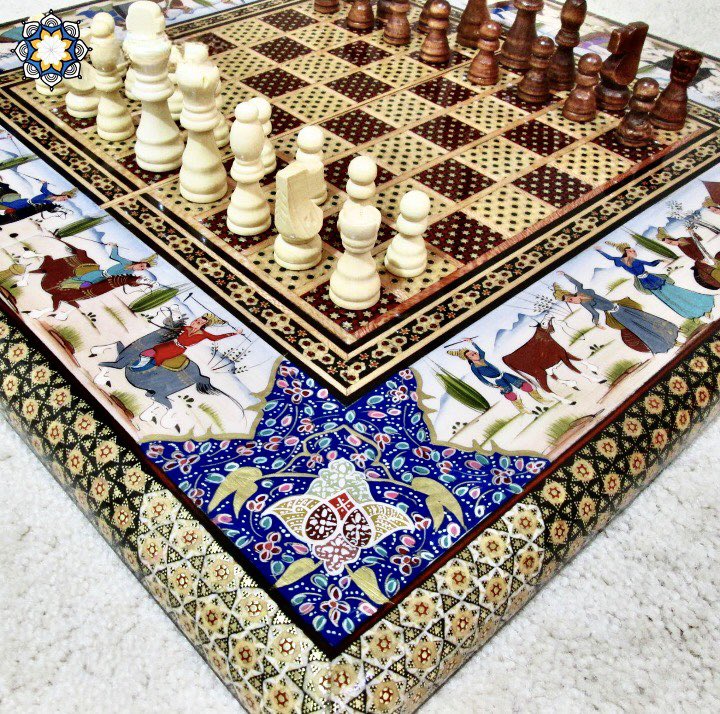Kanafeh Kunafa Kanafe Kunefe. However you say it, this dessert of flaky dough & soft cheese topped with rosewater or orange blossom syrup & crushed pistachios is a Middle Eastern classic
No one knows precisely where kanafeh originated, but there are many theories
A thread…
No one knows precisely where kanafeh originated, but there are many theories
A thread…

1/ The ultimate origin of kanafeh is debated, with various legends attributing its creation to 15th-century Egypt or the Umayyad Empire during the 10th century. In contemporary times, Nablus, Palestine, holds the Guinness World Record for producing the largest kanafeh ever made 

2/ Today, Kanafeh is enjoyed across the world. However, it is particularly popular in Arab territories, including the Levant, Egypt, and Palestine. Additionally, this delectable dessert can be discovered in Turkey, Greece, and the Balkans which boast diverse variations 

3/ The root word of Kanafah is ‘kanaf’, which means to shelter or protect in Arabic. It’s likely that this word was chosen to refer to the two layers of dough that hold cheese between them. 

4/ It is also believed Kanafeh derives its name from the Circassian term "chnafah," meaning "bulbul colour." The bulbul, is a melodious songbird native to the Middle East & Turkey, & the dough in kanafeh is often dyed orange to mimic the bird's vent under its tail 

5/ According to some, kanafeh is said to have been initially made for Muawiya bin Abi Sufyan, the first Caliph of the Umayyad Empire during the 10th century, in Damascus. It was created as a satisfying suhoor meal that could effectively ward off hunger during the day-long fast. 

6/ Alternative accounts, recounting a similar tale of a king facing an insatiable appetite during Ramadan, attribute the origins of kanafeh to the 15th Century Fatimid Empire. The capital of this empire was Cairo, and it was ruled by Caliph Abdelmalik bin Marwan. 

7/ Still other reports claim that kanafeh is derived from katayef, which is another popular Arab dish, whose origins lie in 13th Century Baghdad 

8/ Some claim that kanafeh originates from Nablus, a Palestinian city in modern-day West Bank. In fact, Nablus holds the Guinness World Record for the largest kanafeh (which was 74 metres long and 1.05 metres wide) ever made. 

9/ It has also been suggested kunafa, as a term, was first seen in the 13th century Kitab al Tabikh f’il Maghrib w’al Andalus, which is the book of cooking in Morocco and Andalusia. 

10/ Kanafeh can also be found in Azerbaijan & Turkey.
Künefe is distinctly Turkish believed to have originated in Hatay. It is made with the province's namesake cheese, which is similar to fresh mozzarella.
Künefe is distinctly Turkish believed to have originated in Hatay. It is made with the province's namesake cheese, which is similar to fresh mozzarella.

11/ Kanafeh comes in two distinct variations. Khishneh has a rough texture and is adorned with crunchy bits of kataifi, a shredded phyllo pastry. Na'ameh boasts a smooth surface and is topped with farkeh, a ground semolina dough. Depending on the region, different types of cheese… https://t.co/TjOlMePoMZtwitter.com/i/web/status/1…


12/ Each country has its own variation of the recipe. Syria uses rosewater and Lebanon orange-blossom water for the syrup that is drizzled on top of the dessert. Armenians even add cinnamon, and Egyptians are known to use clotted cream instead of cheese. 

13/ A common variation of kanafah involves substituting Nabulsi cheese with ashta, a Lebanese clotted cream infused with rose water. Recently, there have been more imaginative interpretations of the dessert, such as chocolate, apple, and even an ice cream-infused version. 

14/Kanafeh fusion recipes are popular & even New York cheesecake has even had a Middle Eastern makeover! Sweet and crunchy kanafeh pastry, sandwiches rich and creamy keshta-topped cheesecake. A drizzle of a cinnamon and cardamom kissed sugar syrup ties the flavors together. 

15/ Whatever the history of kanafeh, this sweet dish—made with vermicelli-like dough soaked in sugar syrup, and layered with soft cheese is loved by many across the globe 

Want to know more about food heritage across the Muslim World?
Join us online on Thursday & immerse yourself in the tantalizing world of culinary traditions at "The Art of Food across the Muslim World: Preserving Tradition & Reimagining the Future."
Thursday 3 August
6:00 -… https://t.co/smkfXj9P6atwitter.com/i/web/status/1…

Join us online on Thursday & immerse yourself in the tantalizing world of culinary traditions at "The Art of Food across the Muslim World: Preserving Tradition & Reimagining the Future."
Thursday 3 August
6:00 -… https://t.co/smkfXj9P6atwitter.com/i/web/status/1…

• • •
Missing some Tweet in this thread? You can try to
force a refresh

 Read on Twitter
Read on Twitter


















